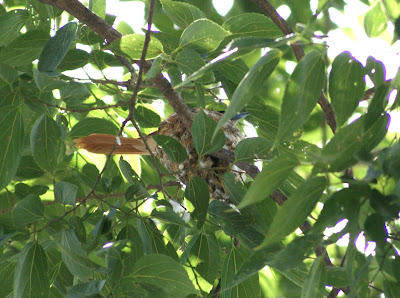This spectacular bird belonging to the crow family is quite common in the hills.It is easily noticable due to its large size and bright colours. It can be seen roaming arround habitations in search of fruits,insects and small birds as well.In the picture it is holding a Kiwi fruit in the bill.
About 65 cm in size with bluish upper parts and long tail it can be heard making loud harsh and creaking calls and sharp whistlings.The bird is good at mimicry as well and has been noticed immitating calls probably to befool the targeted prey.
Normally it is seen at higher altitudes than the Red-billed Blue Magpie but many times they have been noticed together in some localities.The yellow bill and smaller white nape patch distinguishes it from the Red-billed Blue Magpie.
The style of the quick movements of the bird and its cleverness are the typical like crows as expected from a bird of this family.









.jpg)





















